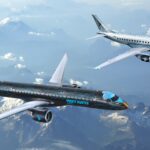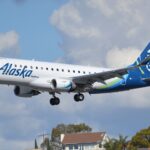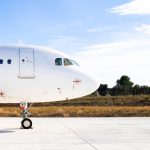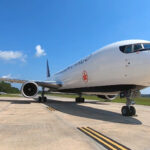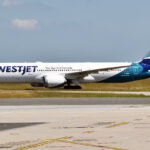I had traveled to the Paris Air Show 2023 with Air France and we had bought the tickets not much in advance — in the peak Summer season, of all times. While Ryanair did offer a lower fare between Italy and Paris, it was through Beauvais Airport, so the difference would be more than compensated with the price and time spent taking the bus to the city.
So Air France it was; I was happy to try the flag carrier for the first time. And the outward journey, in Economy class, was quite good. In the two-hour flight between Rome/Fiumicino and Paris/Charles de Gaulle, they even offered a free sandwich and drinks, including wine. The staff was quite motivated, too, and there was complimentary wi-fi for messaging, albeit very slow.
After an eventful week in Le Bourget, it was time to return home. When doing check-in on the Air France app, an upgrade to Business Class was offered for EUR89 in the seat selection phase. Not much, considering it is peak season, so I took it.
I arrived at Charles de Gaulle airport some two or three hours before the flight, before even the safety screenings were open. Using the fast track, I cleared it in less than three minutes.
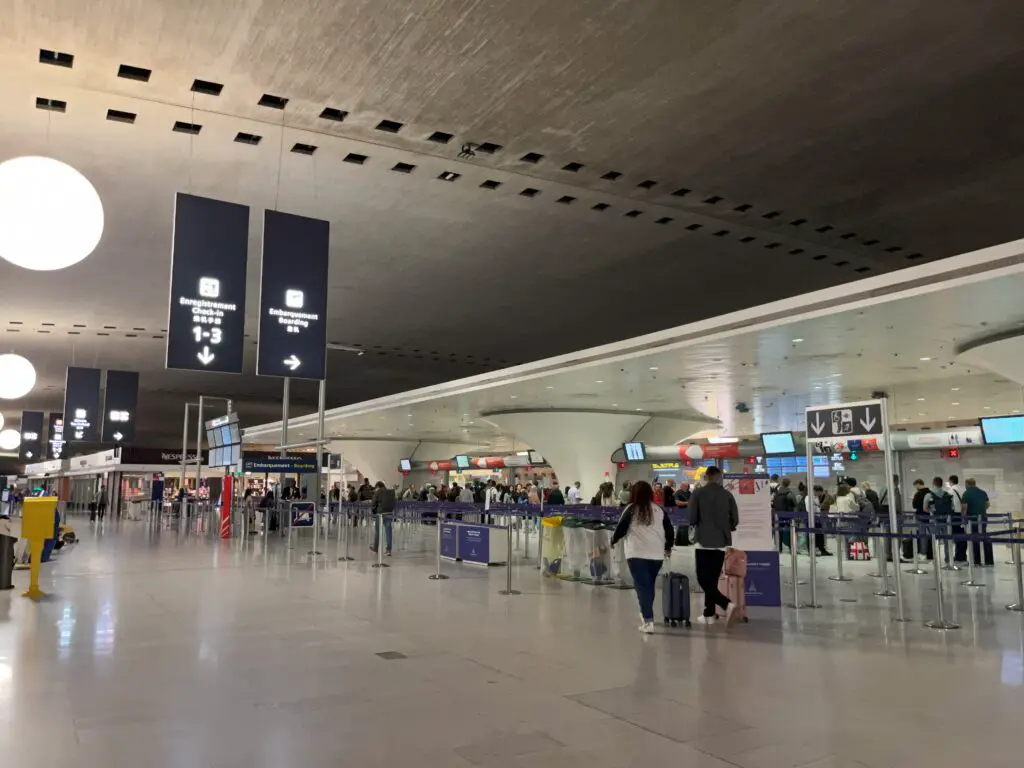
Terminal 2 looks fabulous, although I didn’t quite understand why they divide it in multiple smaller terminals (2A, 2B, 2C…). It sounds confusing, but it seems no one has a problem with it.
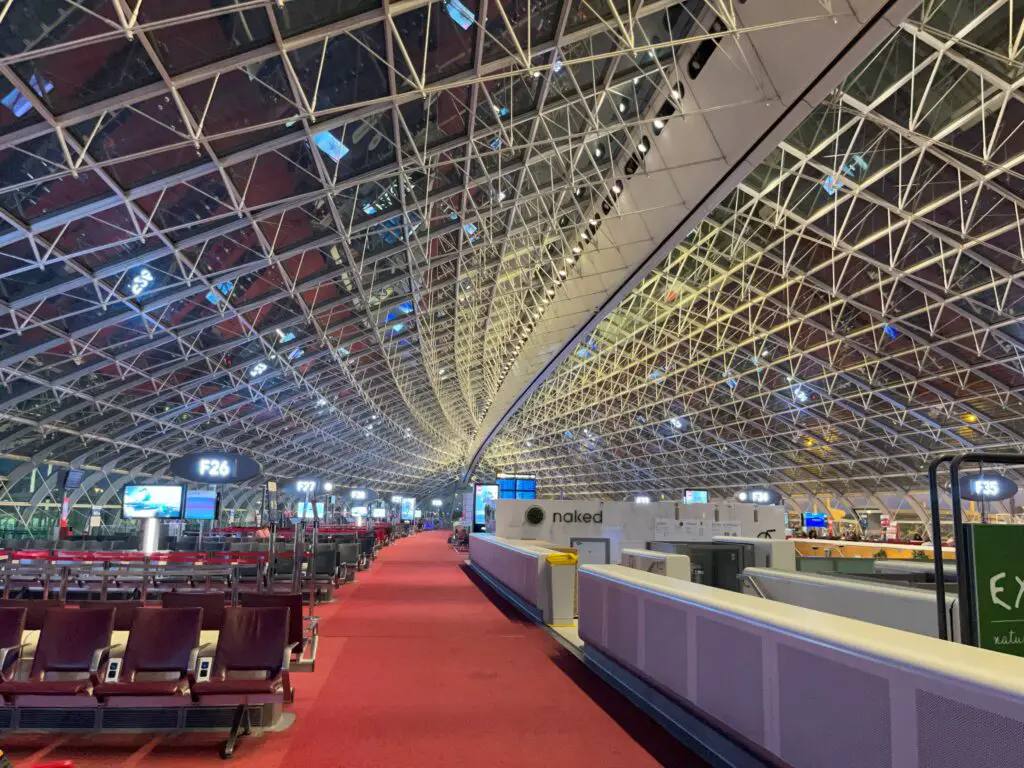
At 05h30, Air France’s lounge opened. If I understood it right, the upgrade gives access to pretty much everything that comes with a regular Business class ticket, apart from the luggage franchise.
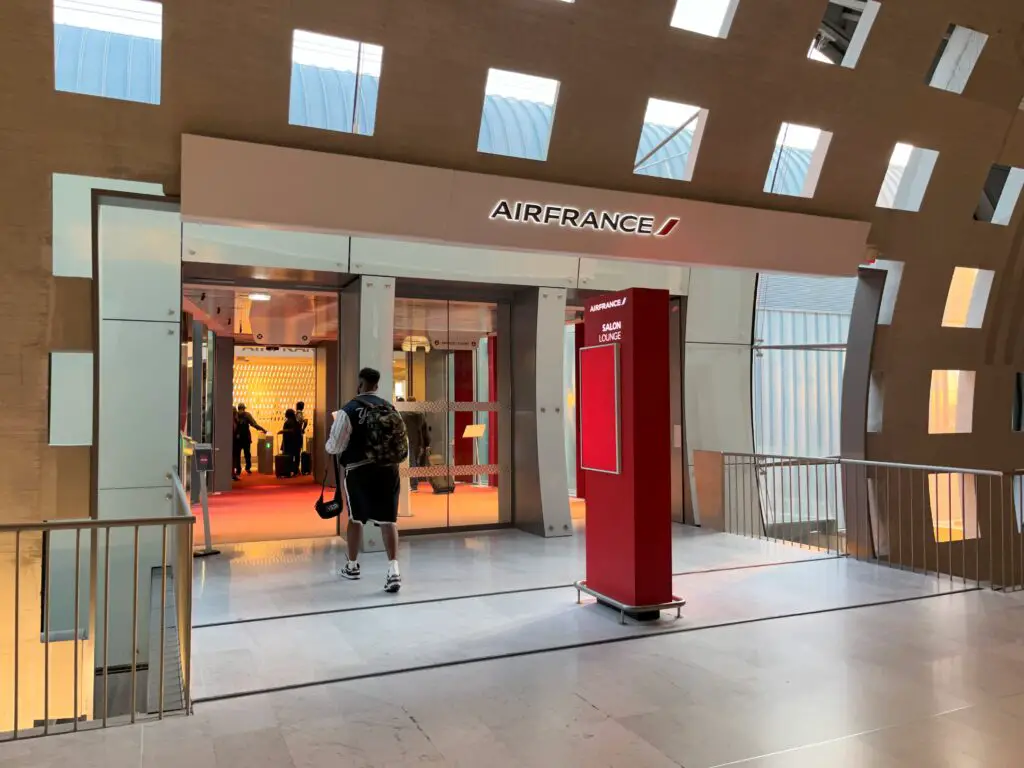
The views from the lounge did not disappoint as the day was dawning. The lounge had plenty of areas for sitting down, having a coffee or eating something.
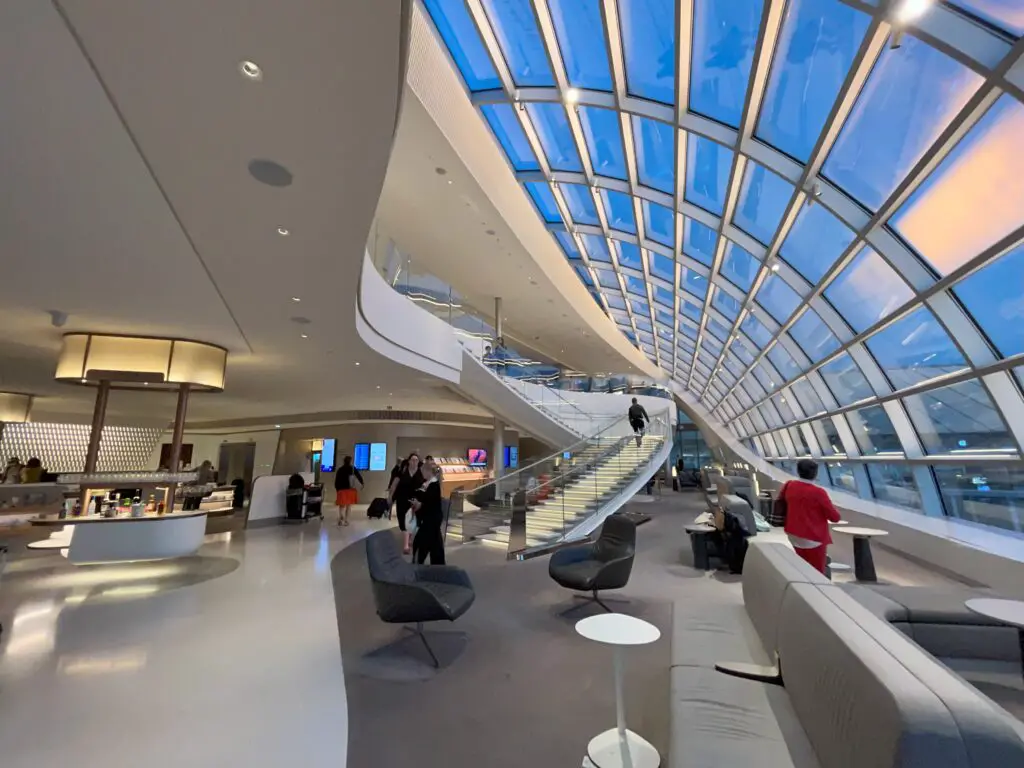
Out in the apron, Air France’s narrowbody fleet prepared for a Summer day of flights. Besides the Airbus A220, here you can see one of Air France’s remaining A318 aircraft. Along with TAROM, they are the last airline flying the type in the world.
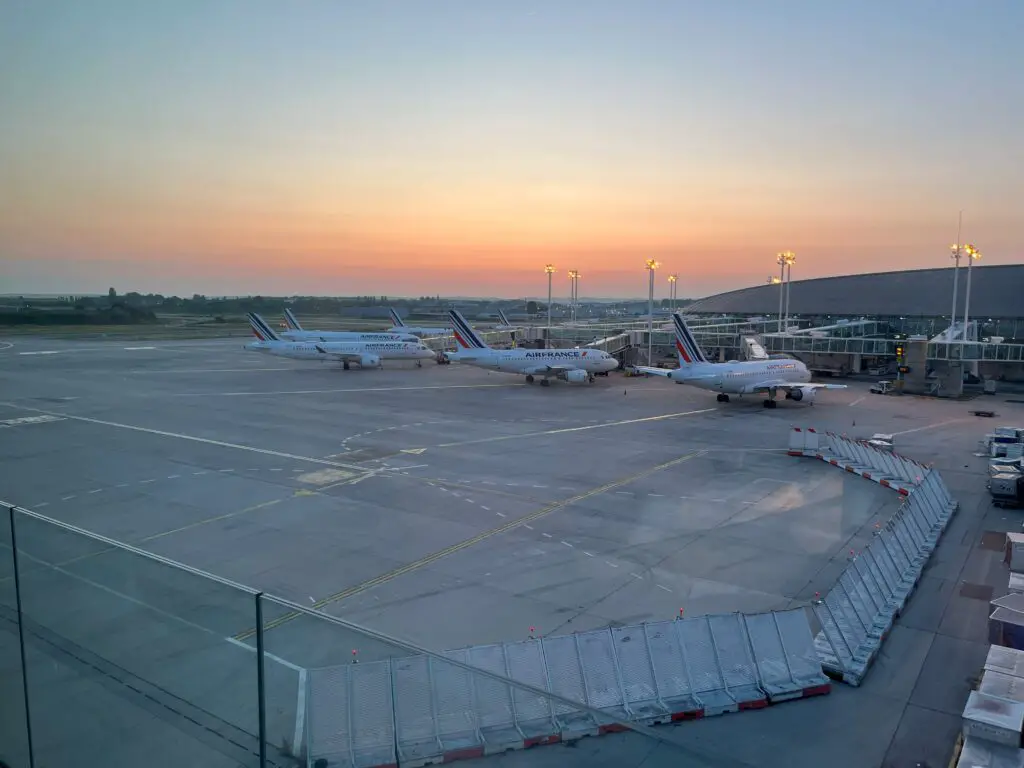
Soon the buffet was rolled out in the lounge; options were what you generally see in a simple hotel breakfast.
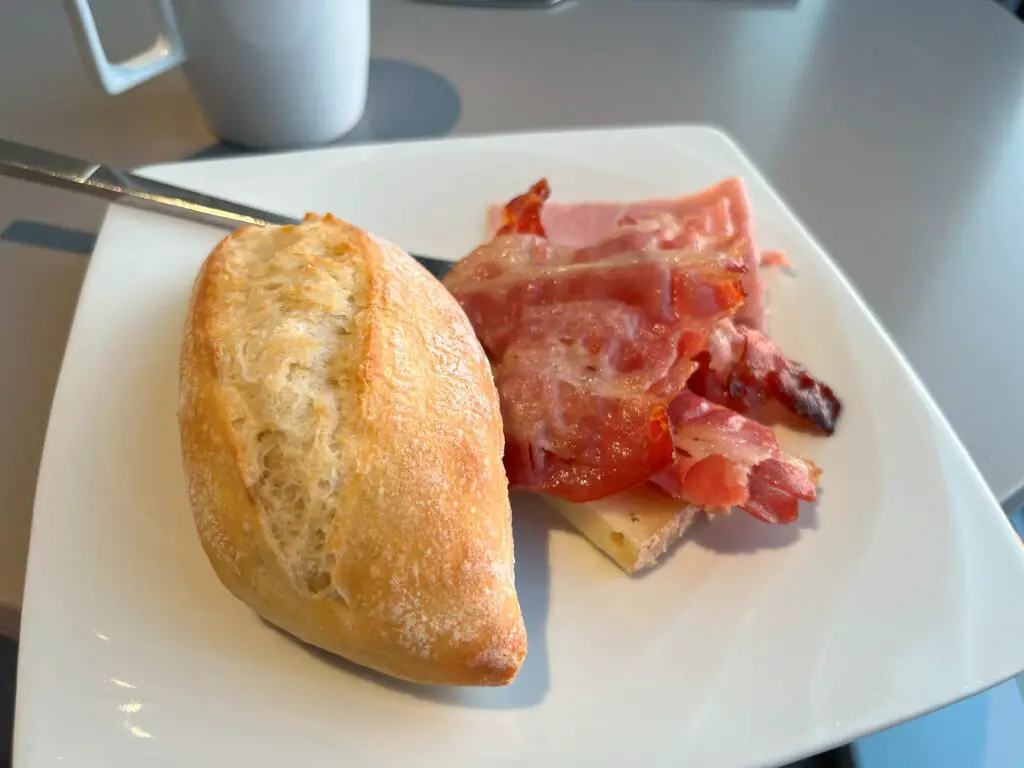
Movement picked up quite quickly as time passed. Given the timing, the very first wave of flights — mine included — did not catch many inbound connections, so I suspect it mainly consists of customers who live or stay in Paris.

On the way to the toilets, they put these posters promoting some destinations and services. A nice choice of setting as it was the only place in the lounge I saw these.

As the time for my flight approached, I left the lounge to go to the gate.
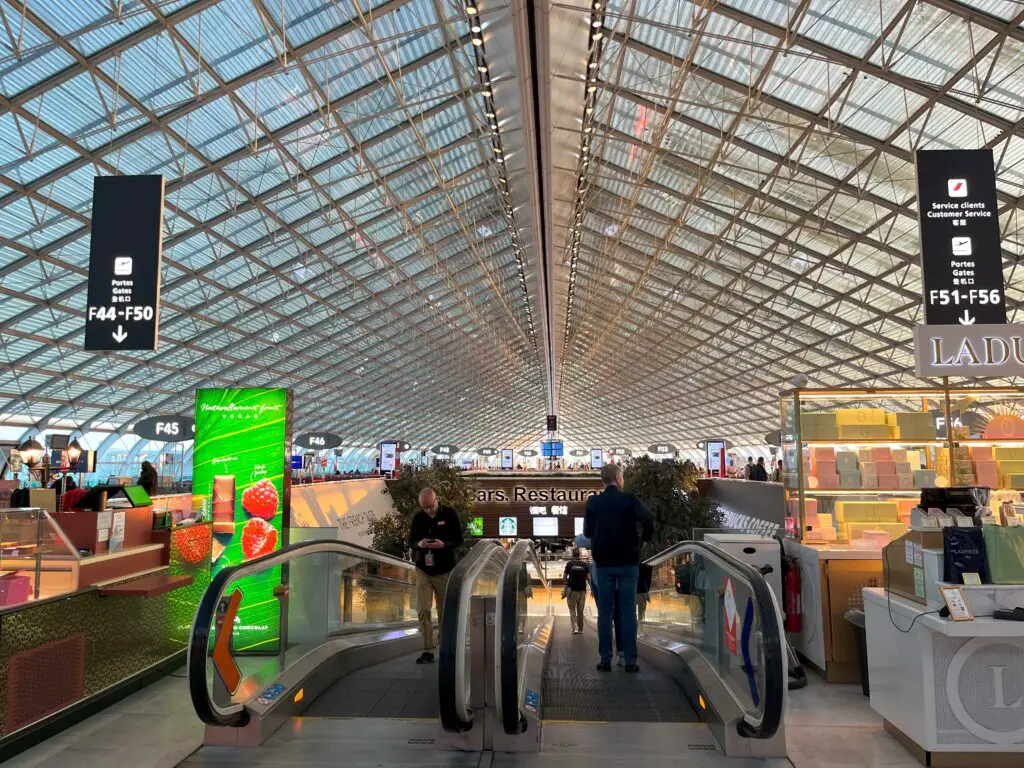
While the terminal was relatively quiet when I had arrived earlier, at this point the terminal was already full of people heading to their flights.
AF1204 CDG-FCO
The aircraft for my flight had spent the night in Paris. Boarding was started on time, respecting the priorities.
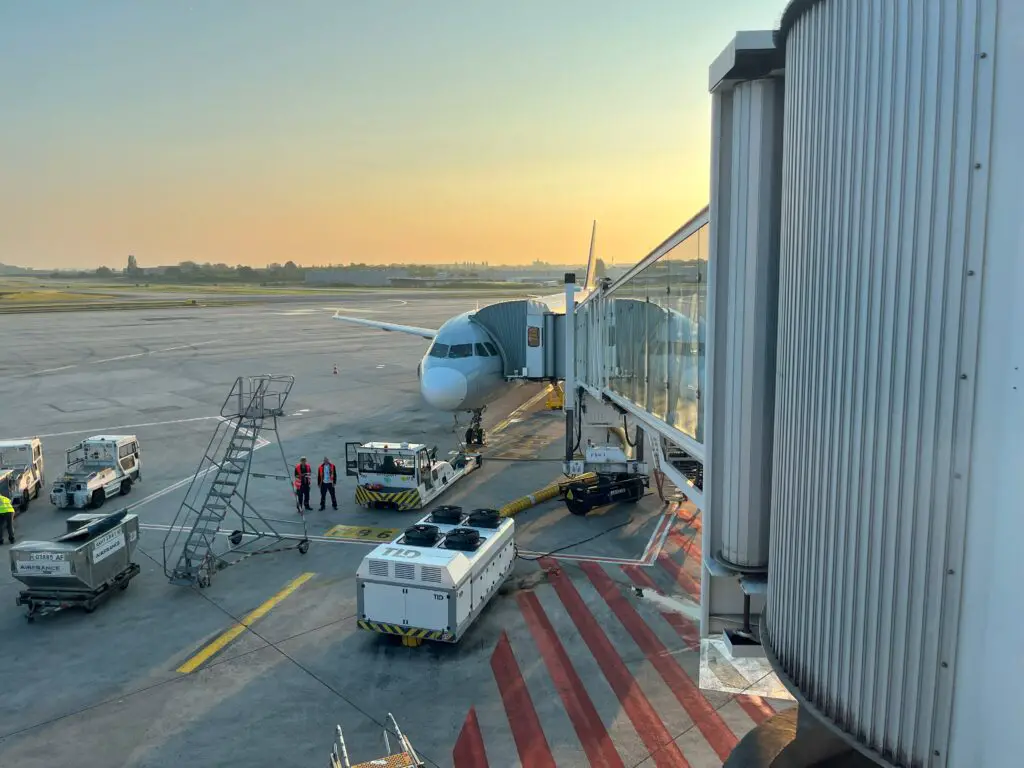
Today’s flight would be operated by F-GTEA. An Airbus A321, it has been delivered to Air France 25 years ago, according to Planespotters.net. This aircraft currently sports the SkyTeam special livery.
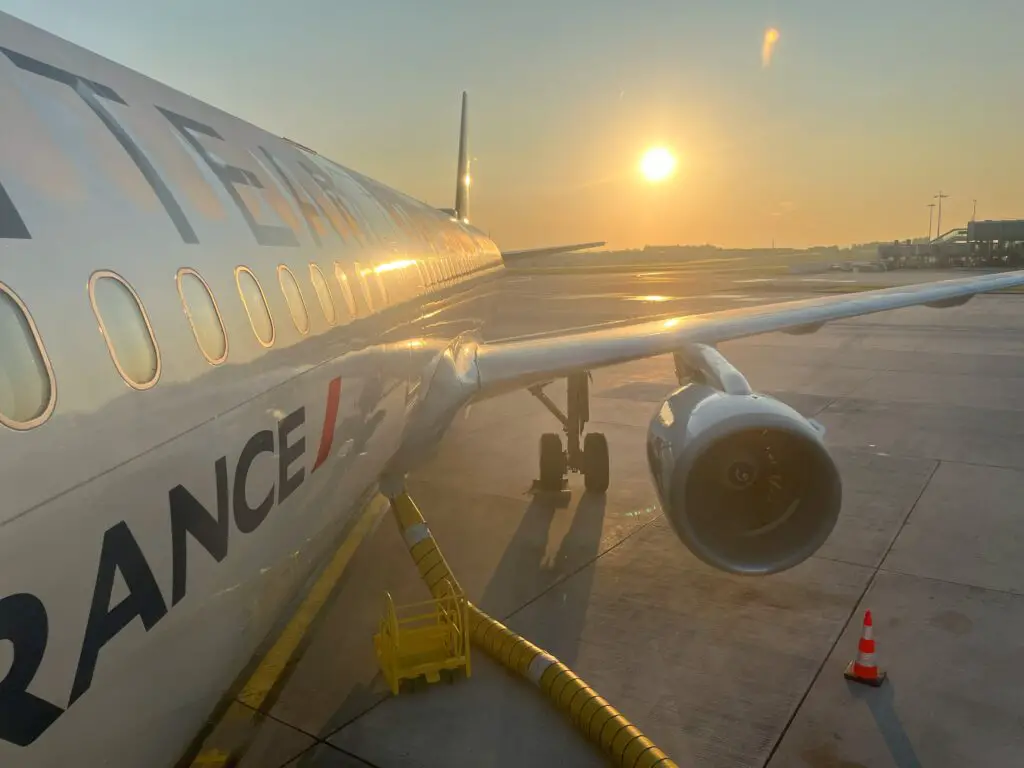
Air France’s narrowbodies, as the majority of legacy carriers’ in Europe, has the same type of seat for the entire cabin, with middle seats blocked in Business class. Because of this «eurobusiness» setup, there is more flexibility. If there is more demand for Business class, more middle seats are blocked and vice versa.
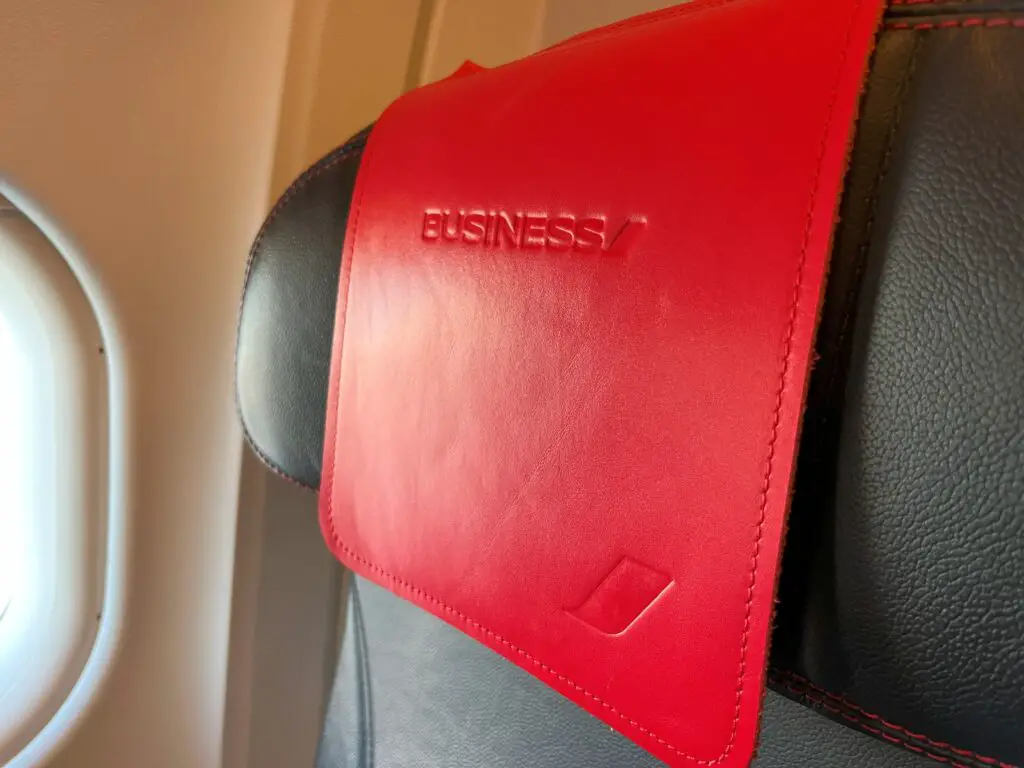
In this flight, there would be four rows of Business class, making for sixteen seats. Because Air France’s A321 are configured with 212 seats, there would be thus 188 seats for sale in Economy.

All seats, besides being in leather, also had this adjustable headrest.
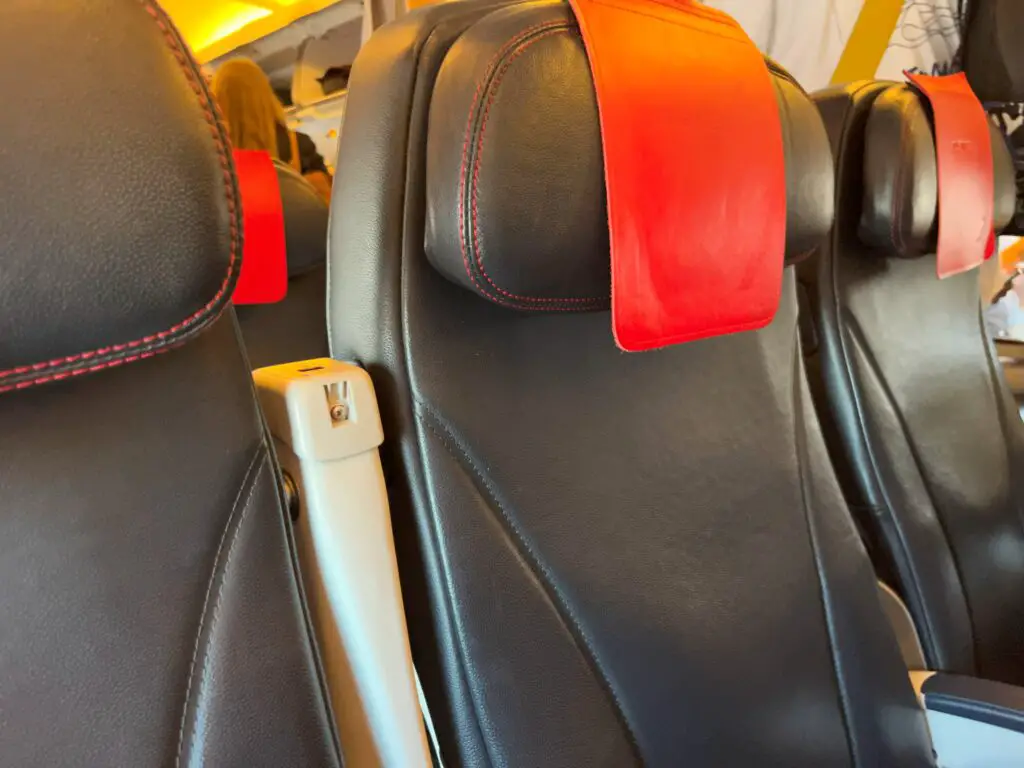
Seat pitch, too, was comfortable.
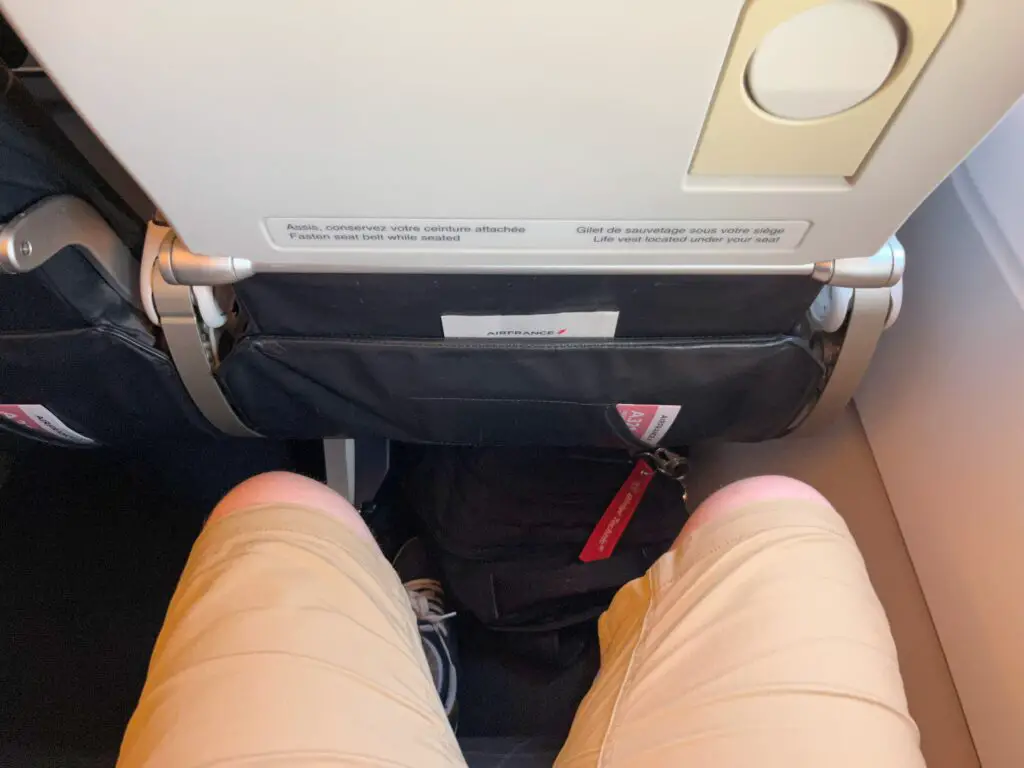
As we prepared for departure, the morning arrivals filled the taxiways. Here, F-GSQR, a 777-300ER named «Châteauroux» heads to the terminal after arriving from Montreal as AF343.
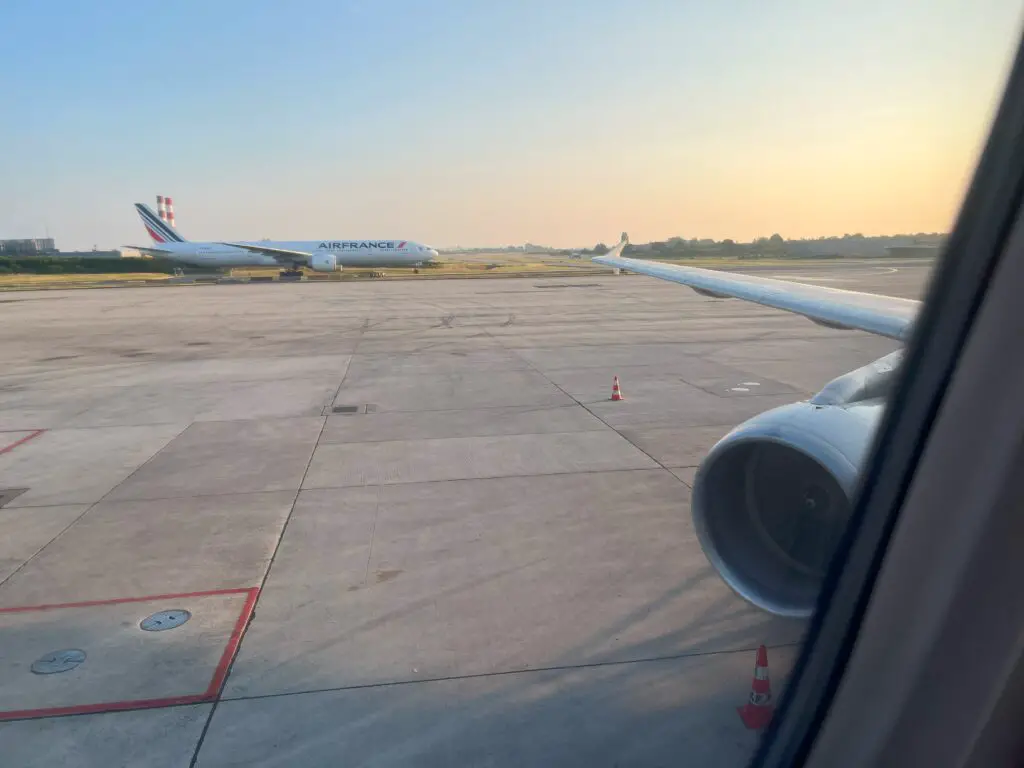
One of the pilots eventually came to the announcement system to tell us we would depart with some delay. The sound was not ideal so I couldn’t understand the reason of our departure delay. Still, conditions en route were good and we would arrive more or less on time.
Refreshing towels were distributed as boarding was completed. The Business cabin looked full, with all 16 seats occupied.

Meanwhile, F-GMZD «Toulon» parked in the gate by our side, arriving from Bordeaux as AF7441.
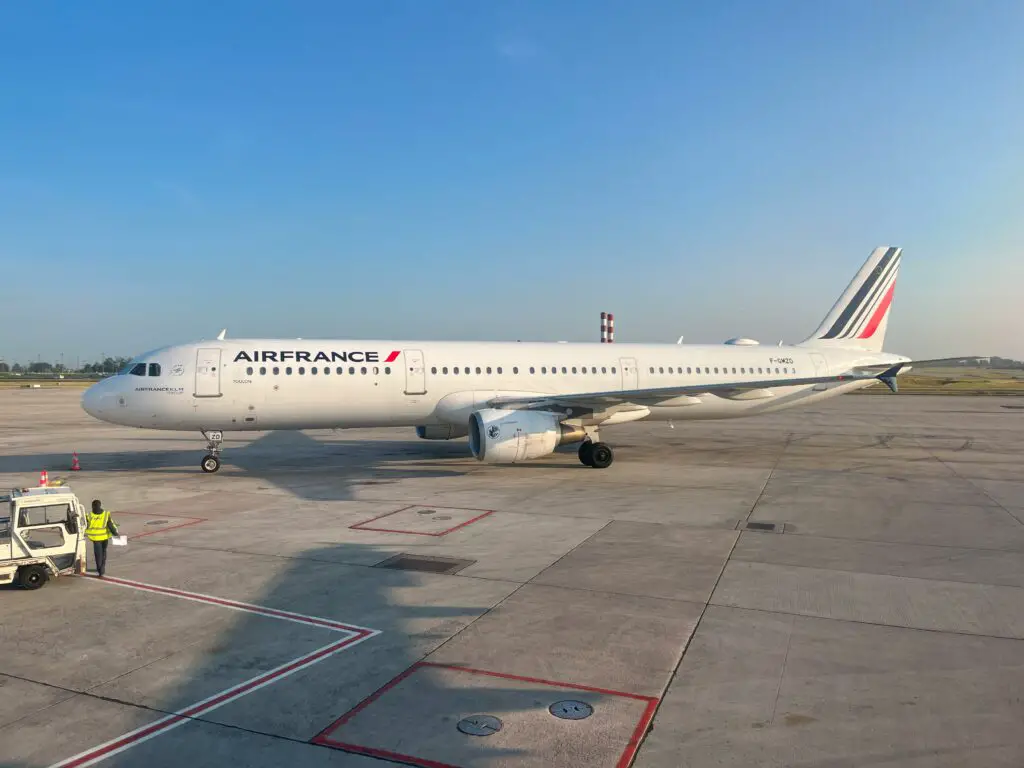
Doors were closed at 07h23 and pushback followed five minutes later, 28 minutes after scheduled departure. Another five minutes and F-GTAE was taxiing to runway 26R.
As we taxied, some nice sights of the extra-Schengen terminals could be observed.
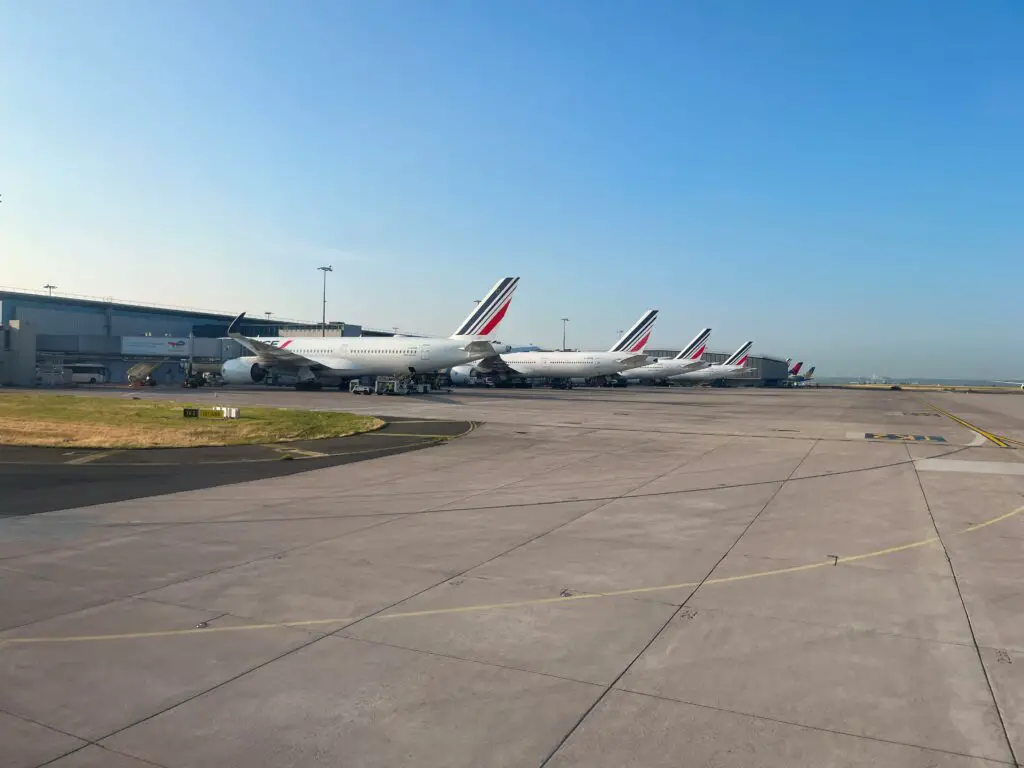
Taxi was relatively short for an airport as large as Charles de Gaulle, and after waiting for other take-offs, AF1204 took off from Paris at 07h39.
As France hosted the Paris Summit for a New Global Financing Pact, with the attendance of several heads of state, some rare VIP aircraft could be seen upon take-off.
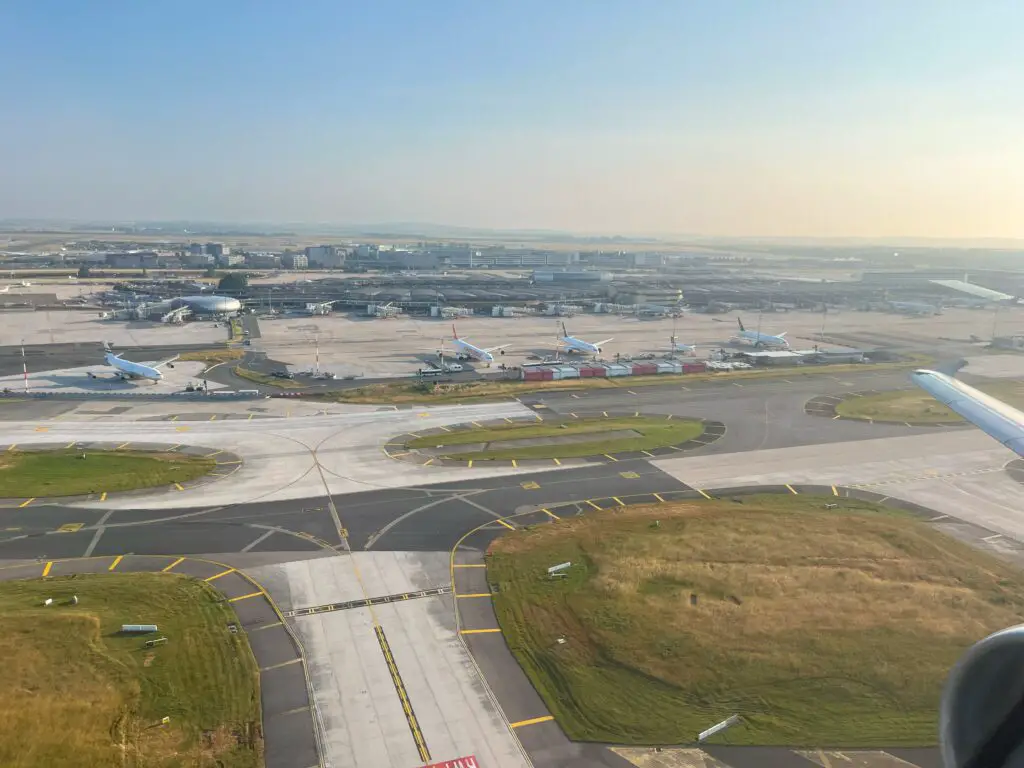
A left turn followed as we climbed to our cruise altitude of 35,000 feet.
As we get older, the odds are smaller that we fly aircraft that were manufactured before we were even born. This 25-year-old A321, however, looked like it was new. The cabin was fresh — albeit the lighting was not the latest version — and clean, and seats looked nice for a narrowbody in Europe.
Some legacy/network airlines elsewhere in the world would add screens, perhaps, but this is a standard cabin in Europe. In this flight, unfortunately, wi-fi didn’t work.
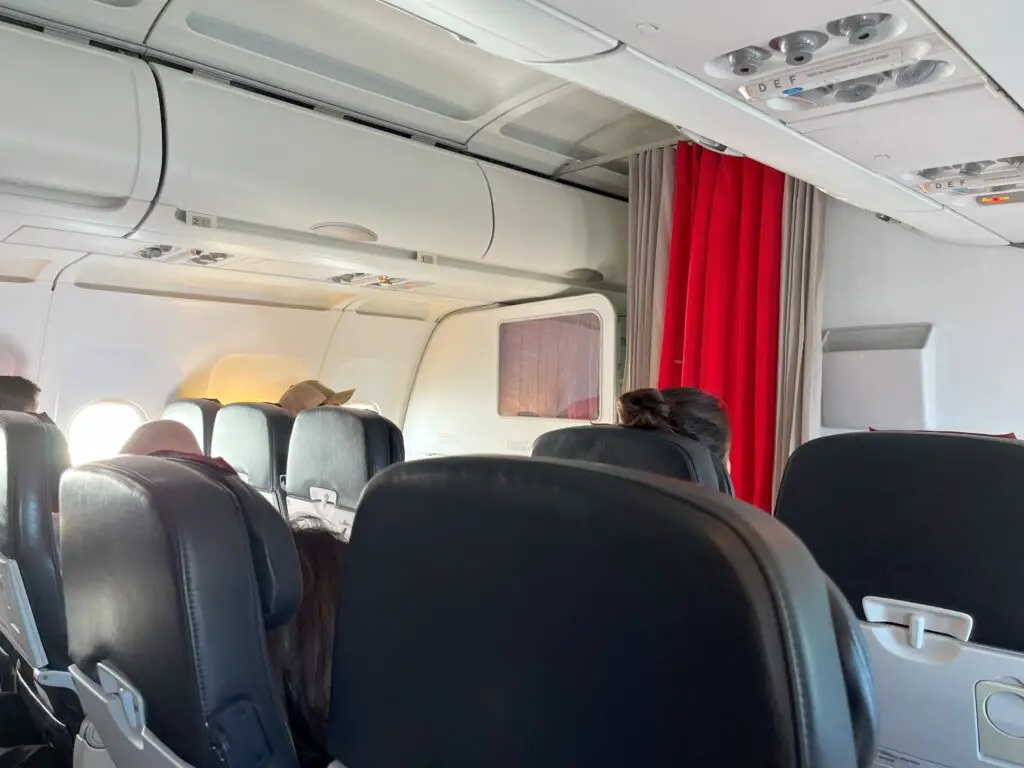
The flight continued smoothly as the day was a beautiful one to fly. Soon the catering service was started.
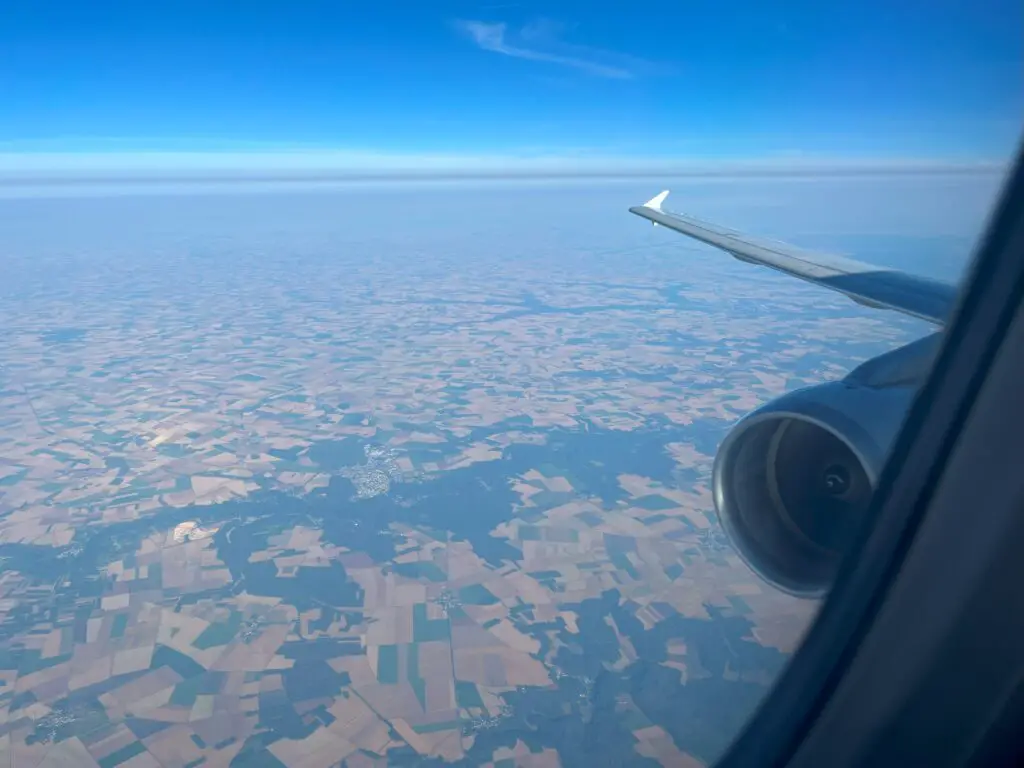
It consisted of a breakfast service, of which presentation was really good.
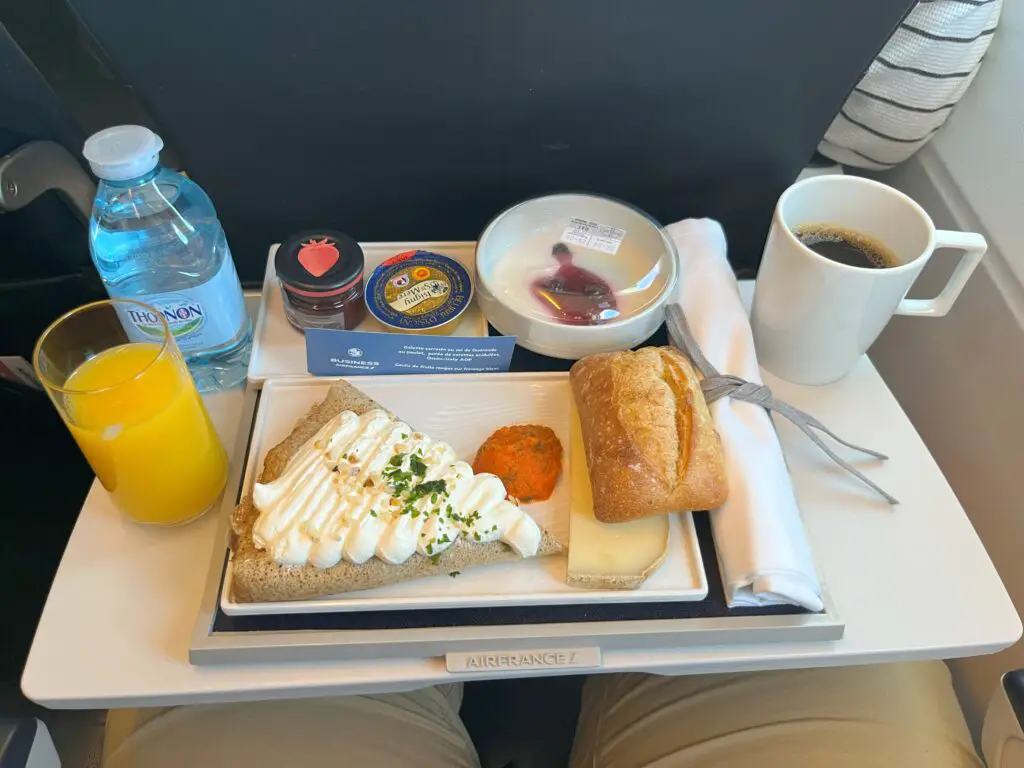
The main plate, according to the small tag they added, was buckwheat pancake with Guérande salt and chicken, tangy carrot purée and a piece of Ossau-Iraty PDO cheese.
Despite the nice presentation, the pancake itself was nothing remarkable; the quantity was good, too.
Meanwhile, the yogurt — or as they presented it, red berry colis on plain thick yogurt — tasted great.
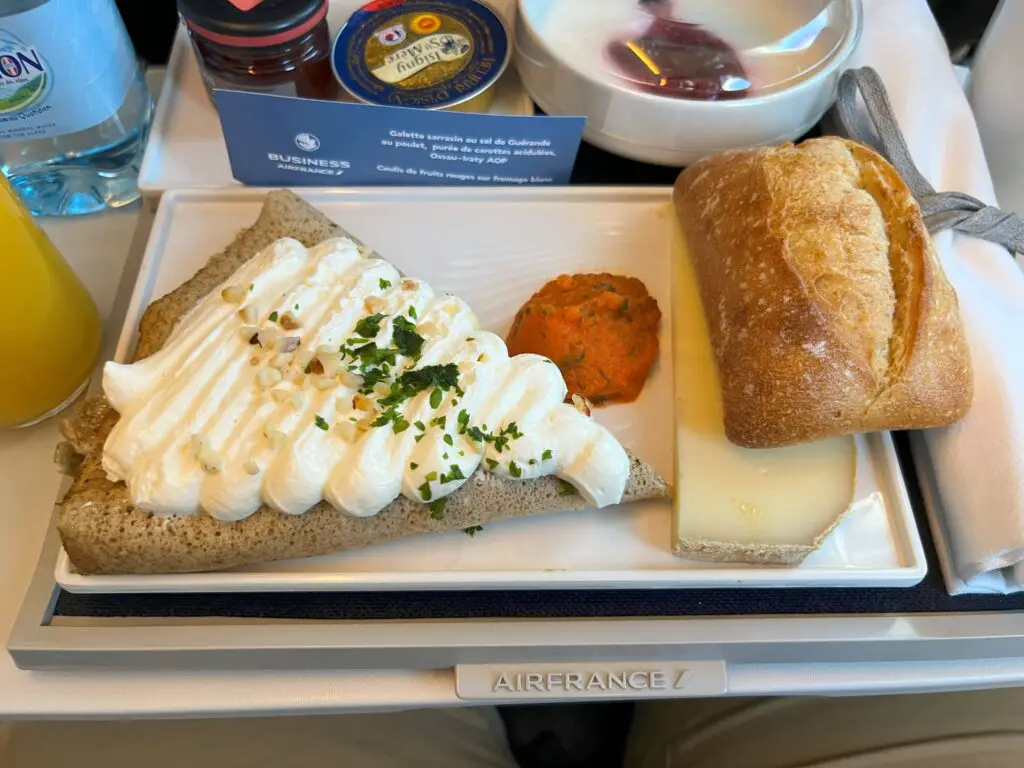
The cutlery provided by Air France, too, was very good.

As it had been in the Rome-Paris leg of the trip, the crew again was a highlight, particularly the male flight attendant, whose name I didn’t catch. I felt a bit sick as I went to the galley and he immediately asked if it was all okay, showing genuine concern and offering me some tea, which was very welcome at the time.
Luckily it was nothing to be worried about indeed, and the tea did help. But even before that moment, when interacting with other passengers and with me, he showed a good deal of motivation; he did seem happy to be there and truly happy to help.
Descent was started at 08h39, as we crossed the Ligurian Sea. Below, the city of Porto Santo Stefano in the Promontory of Argentario.
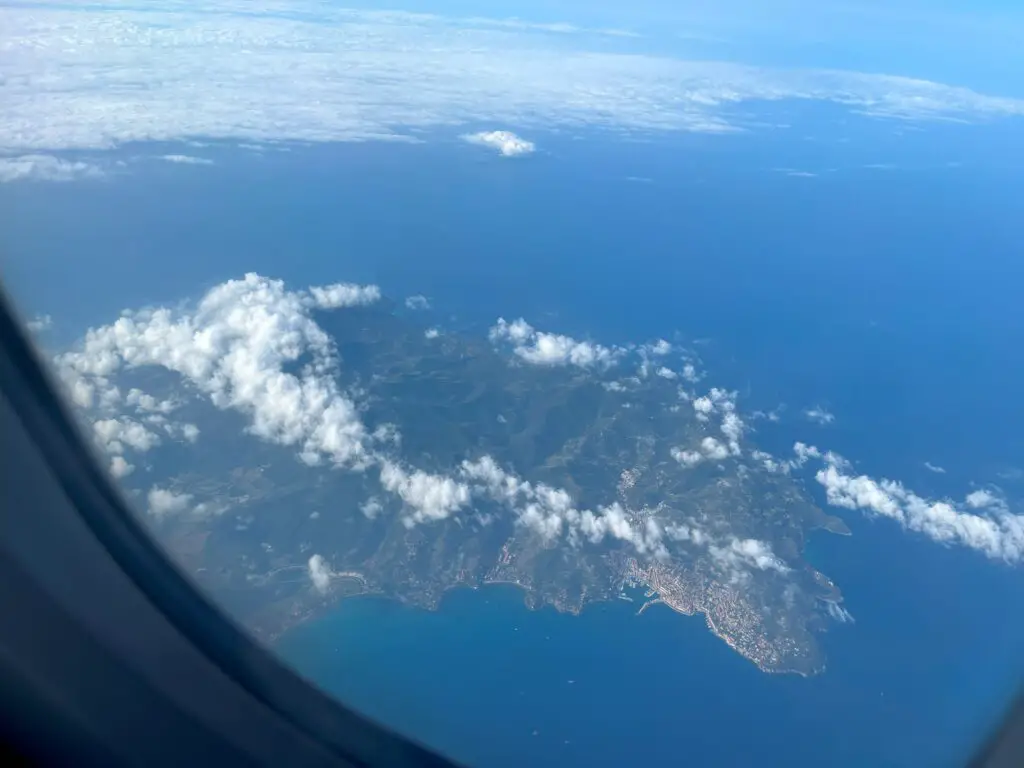
We landed in Rome Fiumicino’s runway 16L at 09h06. By arriving six minutes after schedule, we recovered most of the delay.

At 09h19, deboarding was started.
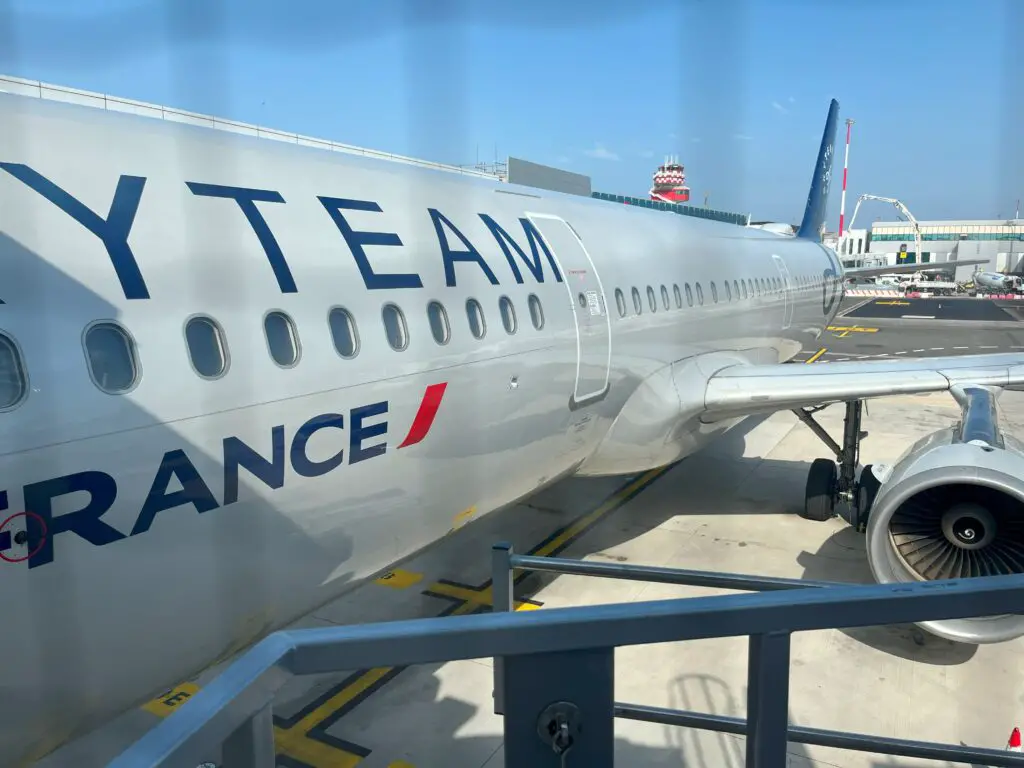
And by our side was this timeless livery. Airbus A320 EI-IKG «Scirocco» prepared to depart to Brindisi as AZ1621.

As this was an intra-Schengen flight, the walk out of the terminal would be short.
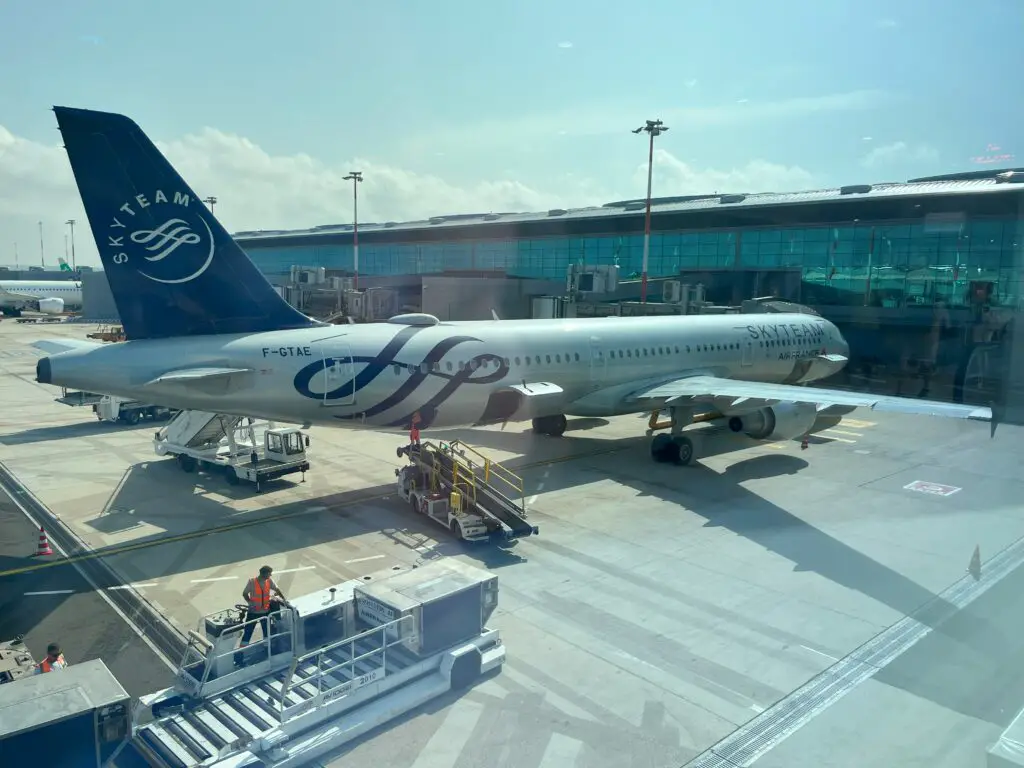
Final remarks
It was interesting to see that Air France’s «eurobusiness» product was actually very good for a two-hour flight. In a land of cost-cutting, it is nice to see the airline still does a good job and offers a good product, despite being one of the «legacy» carriers.
The meal was surprisingly large and relatively creative for a breakfast, although it didn’t taste marvelous. Maybe it was just bad luck? The cabin was comfortable and fresh for an older plane like this one. And the flight attendants were wonderful indeed.
Fine, there might not be great luxuries and the like (is it really needed?), but the value proposition was really good for the industry’s realities in Europe. EUR89 for an upgrade, considering the added value of all services that come with it, is a great cost-benefit.
And then, the product itself is good. Sure there are some places to improve — and I mention in particularly the lack of wi-fi in that flight — but the pay-up was worth it. I only hope this pricing is the same in more modern aircraft.



